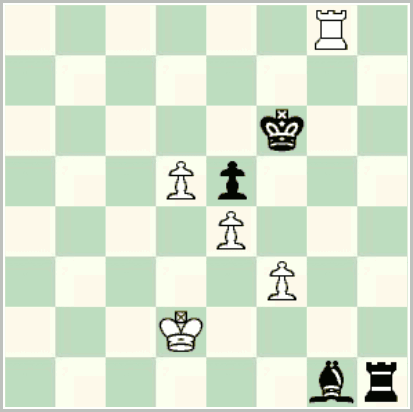One of the critical games of the entire Irish championship in 1978 occurred in the opening round, when Tom Clarke had the white pieces against the top seed Alan Ludgate. Clarke built up a large advantage, turned down a draw offer, missed a clear win near the time control, then blundered with his sealed move.
Even then, the twists and turns were far from exhausted. The diagrammed position shows another critical point.

54. ?
White now went wrong with 54. Re8?, allowing the bishop to reach f4. Instead 54. Kd3!, protecting the e-pawn, threatens f4, liquidating Black’s last pawn. For example, 54… Bf2? leads to an immediate and picturesque draw via 55. f4! exf4 56. Rf8+ Ke5 (56… Kg5 57. Rg8+ and the king has to turn back) 57. Rf5+ and 58. Rxf4. Since 54… Bh2? 55. Rh8 leaves Black unable to break the pin, the only try for a win is 54… Bc5, when after 55. Rc8 Be7 56. Rc6+, it is unclear whether Black can make progress.
After the move played, there followed 54… Bh2, when the pin is no longer feasible. Even then, White must have excellent prospects to hold via 55. Kc3. Instead after 55. d6? made it inevitable that the pawn would drop, and White gave up a couple of moves later.

I though that after 54.Kd3 Bh2 55.Rh8 black could escape using the skewer trick Rd1+ and if 56.Ke2 Ra1 prevents 57.Rxh2 due to …Ra2+ and 58…Rxh2. But white has 56.Kc2 Ra1 57.Kb2! forcing Rh1.
Interesting position with lots of subtleties.